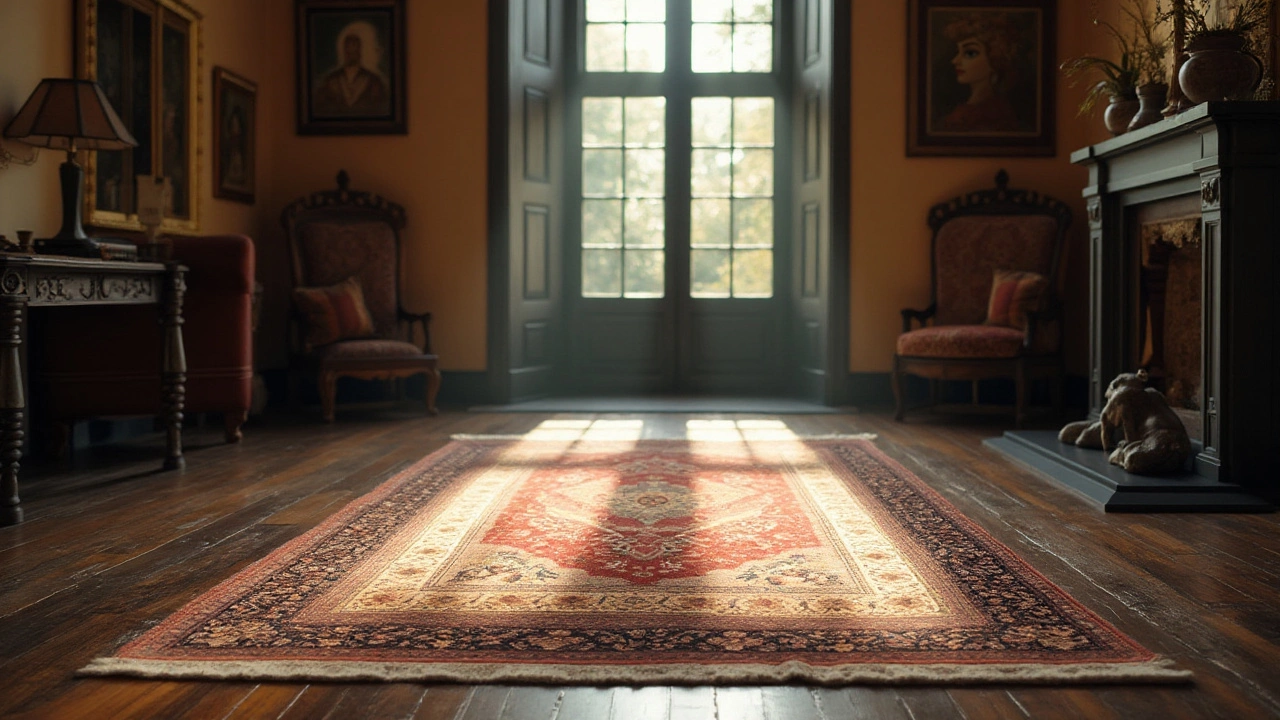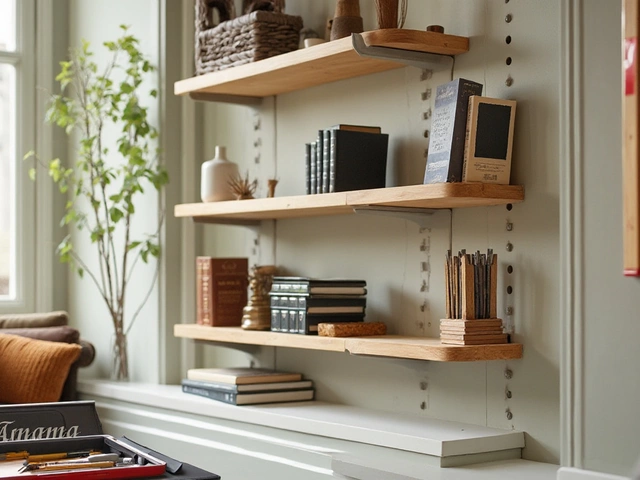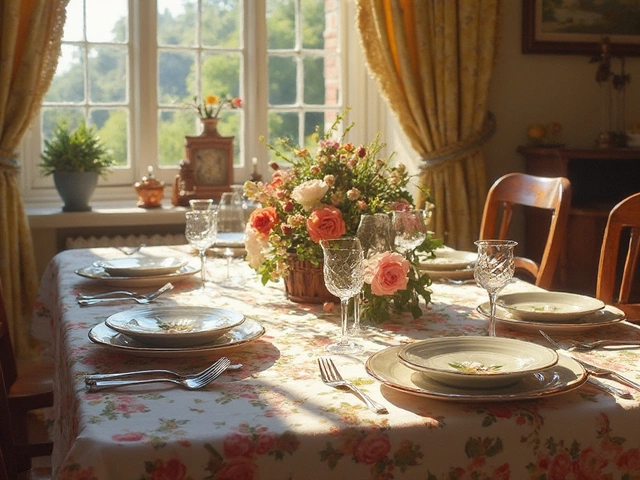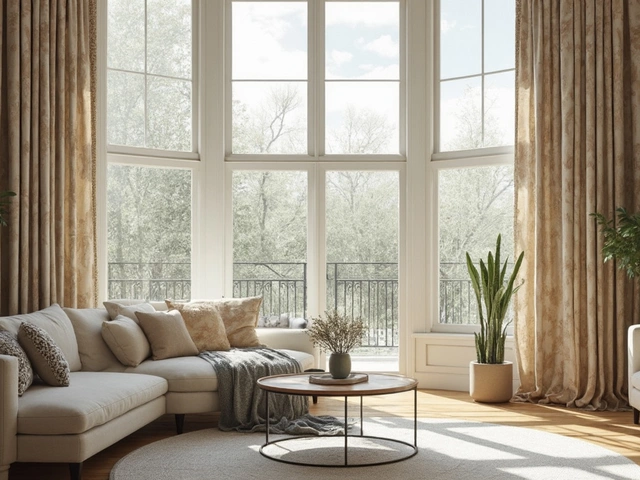When wandering through a vibrant rug market or browsing an online store, it's easy to be captivated by the array of patterns and colors. However, beyond aesthetics, some rugs carry profound significance, such as prayer rugs. Used in certain religious practices, these rugs serve not just as beautiful additions to a room, but also as essential elements in spiritual rituals.
In the world of rugs, knowing how to distinguish a prayer rug from others can unveil rich stories behind a seemingly simple textile. Whether you're a devoted collector or an inquisitive admirer, understanding these differences can be enlightening. Join us on this journey of discovery as we delve into the features that set prayer rugs apart, making them treasures of both faith and craftsmanship.
- Understanding the Cultural Significance
- Key Characteristics of Prayer Rugs
- Materials and Craftsmanship
- Notable Designs and Symbols
- Tips for Identifying Authentic Prayer Rugs
Understanding the Cultural Significance
Prayer rugs have transcended their utilitarian roots to become profound symbols of spirituality across various cultures and religions. Primarily associated with Islamic practices, these small pieces of fabric carry the weight of centuries of tradition and devotion. For many observant Muslims, a prayer rug provides a clean and isolated space for performing salah, the five daily prayers, helping to maintain the sanctity and focus required during worship. In many households, the purchase of a prayer rug reflects a significant commitment to the spiritual discipline, often becoming treasured family heirlooms passed down through generations.
In addition to their religious use, prayer rugs are also admired for showcasing the artistic expressions of different regions. The designs and motifs woven into these rugs offer valuable insights into the rich histories and diverse traditions of the cultures they represent. From the intricate geometric patterns of Turkish prayer rugs to the floral and arabesque themes found in Persian varieties, each prayer rug tells its own unique story. Although they may vary in style and color, the compass-like patterning typically found at one end of the rug—symbolizing a mihrab or prayer niche—serves a universal purpose, indicating the direction of Mecca for Muslims who pray.
The artistry of prayer rugs is not just limited to Islamic cultures; similar concepts can be found in other religions as well. For example, though not as widely known, certain branches of Hinduism also use small mats or chadars during prayer rituals. In these contexts, the rugs or mats signify a sacred space that separates the devotee from the ground, helping to focus the mind on spiritual practices. As essential personal and religious items, prayer rugs provide a fascinating window into how different cultures utilize textiles to express and formalize their spiritual beliefs.
"In art, a prayer rug can be seen as an emblem of diversity, blending function with elaborate designs that serve as both a sacred object and a cultural artifact," mused art historian Sanam Naderi.
Consider this: in many regions where prayer rugs are crafted, the creation process itself is deeply intertwined with spiritual significance. Oftentimes, the weavers work with a deliberate intention, believing that the act of crafting these rugs is a meditative practice, serving both as personal devotion and community service. In rural areas, it is not uncommon for prayer rugs to be made collaboratively, with families participating in each step—from choosing the wool to weaving the intricate designs. In this way, prayer rugs embody not just the devotion of the individual but also the strength and unity of community bonds.
While these rugs fulfill their primary function within religious rituals, over time, they have also gained appreciation as valuable works of art in their own right. Collectors prize them for their traditional craftsmanship and historical significance, and institutions often showcase them as part of cultural exhibitions exploring art and religion. This duality adds another layer to understanding prayer rugs, inviting people from diverse backgrounds to appreciate them not only as religious objects but as celebrations of cultural heritage. As global interest in these artifacts grows, so too does the opportunity to honor the rich legacy and spiritual depth that prayer rugs represent.
Key Characteristics of Prayer Rugs
When it comes to identifying a prayer rug, several unique characteristics stand out. The size is typically one of the first things you'll notice. These rugs are often smaller than traditional area rugs, with dimensions that accommodate the space needed for an individual to kneel and bow in prayer. The compact size is both practical and symbolic, making it easy for worshippers to carry their rugs if necessary. This portability highlights their role as personal devotional items.
Design plays a crucial role in differentiating prayer rugs from other types. A common feature is the presence of a mihrab—a niche or arch symbol—that represents the direction of Mecca, guiding Muslims during prayer. This feature can be elaborately woven with intricate patterns and bright colors or kept simple and understated. It acts as a visual reminder of the sacred direction and is often flanked by decorative motifs like columns or floral patterns that add a touch of artistry.
The symbolism embedded in the rug's pattern is rich and varied, often telling stories or representing spiritual concepts. It is not just about beauty; it's about conveying meaning. For instance, geometric shapes can symbolize the infinite nature of the divine, while floral motifs might signify paradise. Some rugs feature a tree of life design, symbolizing growth and the path to spiritual fulfillment. This combination of beauty and meaning makes them treasures beyond their material value.
Materials used in crafting prayer rugs are typically sourced for both their quality and durability. Wool is a common choice, providing warmth and comfort. In some traditions, silk is used, adding luxury and softness. The choice of material often influences both the tactile experience and the aesthetic appeal of the rug. Hand-knotted varieties are especially valued, reflecting a high level of craftsmanship and attention to detail. These rugs are not just objects of faith but artistic expressions.
According to a study by the Textile Society, 75% of traditional prayer rugs are handwoven, a testament to the skill involved in their creation. This labor-intensive process ensures each rug is unique, with slight variations that add to their charm and authenticity. Machine-made rugs do exist, catering to a mass market, yet they lack the individuality and historical connection prized by collectors. Investing in a hand-knotted rug is often seen as a tribute to the artisans' legacy.
In understanding these key characteristics, it’s essential to recognize the profound cultural and spiritual heritage they embody. As one reflects on the intricate patterns and thoughtful designs, it becomes clear that prayer rugs are much more than floor coverings—they are vessels of history, artistry, and faith, cherished across generations and cherished for their spiritual significance and historical relevance.
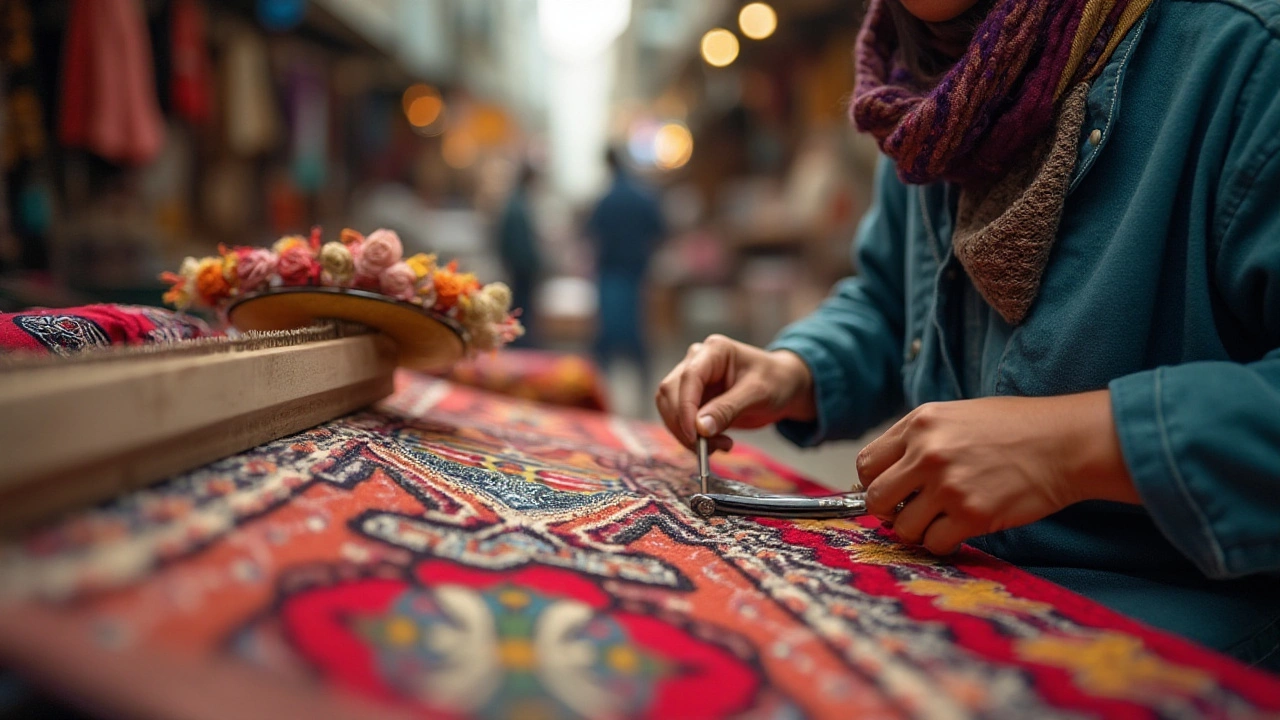
Materials and Craftsmanship
The enchanting allure of prayer rugs goes beyond their colorful designs; it lies deep in the choice of materials and the expertise of the artisans who weave them. Traditionally, the most esteemed prayer rugs are crafted from natural fibers like wool, cotton, and silk. Wool, being both durable and soft, is a favorite among weavers from regions such as Turkey and Iran. The rich texture of wool not only enhances the tactile experience but also provides warmth and comfort during prayer sessions. Cotton, on the other hand, is often utilized for the intricate base due to its strength and ability to hold dye well, allowing for the detailed motifs to truly shine. Silk, with its luxurious sheen, is reserved for the most opulent pieces, often reserved for significant occasions or as family heirlooms.
Craftsmanship plays a pivotal role in defining the identity of these rugs. Many weavers inherit their skills through generations, combining time-honored techniques with their own innovative touches. The weaving technique, usually hand-knotted, ensures each rug carries a unique personality. In fact, some rugs can take months to complete, as artisans painstakingly ensure each knot contributes to the harmony of the design. It is not uncommon for users to find echoes of specific cultural identities in these rugs, whether through Berber influences or Persian inspirations. A majestic symphony of design, color, and texture awaits those who unveil the layers of artisan influence in a prayer rug. The commitment to excellence in both material choice and weaving intricacy is evidenced by the longevity of authentic prayer rugs, which often withstand the test of time both in beauty and functionality.
"Tradition is not the worship of ashes, but the preservation of fire," said Gustav Mahler. This resonates deeply in how artisans approach their craft, giving life to timeless pieces.
Ensuring quality control has traditionally been a significant concern for families relying on these skills. Often, the entire family contributes to the process, with elders guiding younger members to maintain standards. In some cultures, particular patterns and weaves can even denote the origin or social status of the weaver. This aspect of craft and design gives each prayer rug a story, a heartbeat that connects the past with present cultural and religious practices. With the increased demand for these rugs in international markets, there’s an irreplaceable value in preserving the authenticity and integrity of traditional weaving methods. Collectors and enthusiasts are encouraged to learn about the specific traits that distinguish these artisanal works from mass-produced imitations, ensuring they pass on not just visually striking, but genuinely crafted pieces.
Notable Designs and Symbols
Prayer rugs are rich tapestries of culture and spirituality, often adorned with intricate designs and motifs that hold deep meanings. Whether crafted in vibrant colors or subtle tones, these patterns are not merely decorative; they are imbued with symbolic significance, conveying messages and beliefs through their artful weaves. Across cultures, the design of a prayer rug often includes a mihrab motif, which resembles the niche in a mosque wall indicating the qibla, or direction of Mecca. This design serves as a focal point for prayer, guiding the faithful during their devotions.
Floral patterns are also common on prayer rugs, representing paradise's bountiful gardens according to Islamic thought. These motifs can be quite detailed, with interwoven vines and blossoms symbolizing life and spiritual growth. Occasionally, the rugs feature stylized architecture, reflecting the arches and columns found in sacred spaces. This architectural symbolism is thought to evoke a sense of entering a holy place, even while at home. Skillfully rendered borders often encase these central images, acting as protective symbolic frames that safeguard the sacred scenes depicted within.
According to Dr. Jon Thompson, an expert in Islamic art and carpet textiles, "Prayer rugs encapsulate a world of spiritual and artistic expression, offering a window into both religious practices and diverse artistic traditions."
Among the hallmark features of these rugs are geometric designs, which frequently appear either subtly or boldly. These patterns are more than just aesthetic; they often reflect the cultural heritage and identity of the weaver’s community. In some cases, specific geometric shapes are imbued with particular meanings, such as the eight-point star, which can represent balance and harmony. Additionally, Islamic calligraphy may sometimes feature in the design, with verses from the Quran adding a layer of textual sacredness to the rug's visual message.
The color palette of prayer rugs can also hold symbolic meaning. Reds might signify vitality and courage, blues convey peace and spirituality, while greens often represent heaven and are favored in religious contexts. These color choices are usually intentional, reflecting the moods and themes that are considered during worship. When closely examined, one can see that in each thread woven and knot tied, there exists a narrative that speaks of devotion, cultural pride, and artistic innovation.
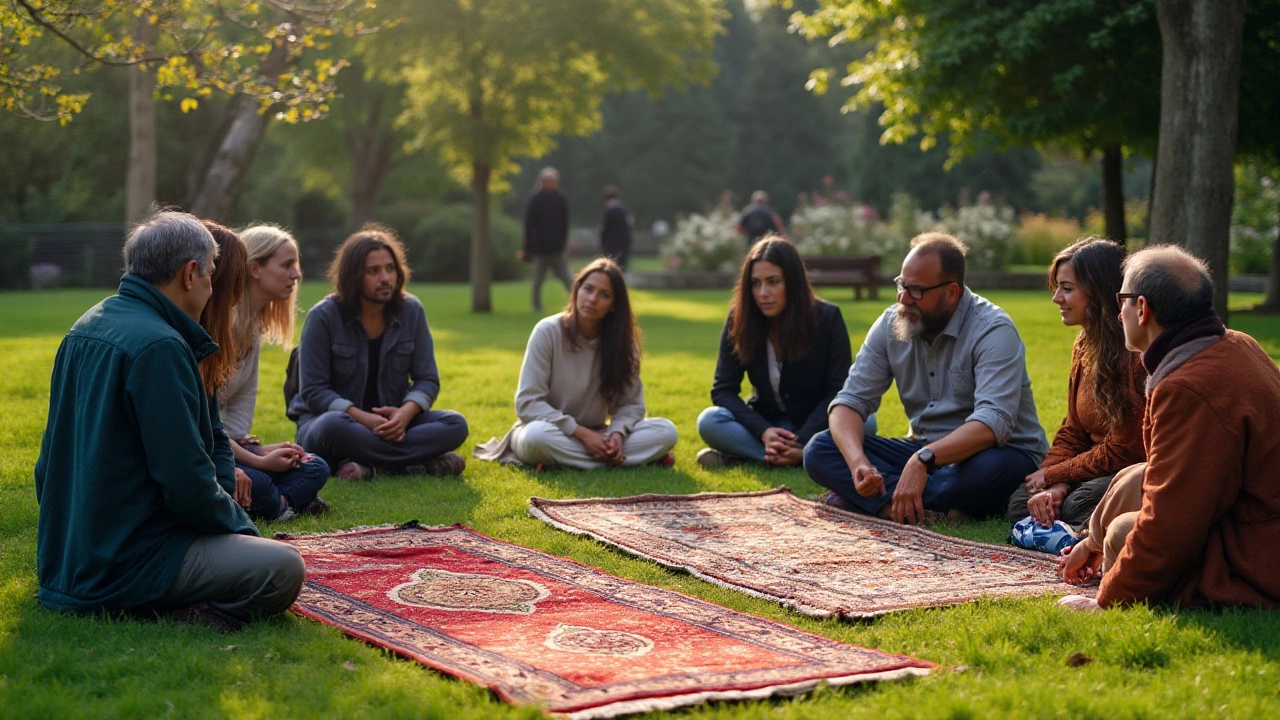
Tips for Identifying Authentic Prayer Rugs
Delving into the world of prayer rugs can be both an exciting and daunting journey. These rugs, steeped in history and culture, are more than just decorative parchments. If you're seeking to differentiate a genuine prayer rug from an ordinary one, understanding a few key attributes can be immensely helpful. First and foremost, examine the size and shape. Typically, authentic prayer rugs are smaller than the average decorative rug, often intended for individual use during prayer times. These rugs are usually rectangular, aligning well with personal prayer spaces, and are designed to be portable and practical for devotees to carry elsewhere.
Another characteristic to consider is the design and symbolic motifs. Traditional prayer rugs frequently feature a mihrab, a design element that mimics the arched prayer niches found in mosques. This motif directs the user towards Mecca during prayer. The rug's aesthetic is not just ornamental; each symbol holds meaning, typically representing paradise and purification. Floral and arabesque patterns may adorn the borders, serving both as beautification and as reminders of the garden of paradise described in holy texts.
Material and craftsmanship also play crucial roles in identifying an authentic rug. A genuine prayer rug is often made from wool or silk, materials known for their durability and fine quality. Exquisite artisanship is visible through tightly woven fibers, ensuring longevity and sustained beauty over years of use. Hand-knotted and finely woven surfaces showcase the dedication and skill of the weaver, rather than mass-produced versions, which often miss the personal touch and intricate details. When purchasing a prayer rug, it’s important to feel the texture, as genuine rugs often feel luxuriously soft and plush, distinguishing them from imitations which might feel rough or tough.
Consider conducting research or consulting experts when in doubt, as this can further ensure the rug's authenticity. Speaking with knowledgeable sellers or engaging with communities who value this craft can uncover even more intricacies. And remember, the history hidden within each thread might just tell a story of devotion and artistry beyond your initial perception. As scholar Mustafa Ali once said,
"A prayer rug is not merely a surface on which prayers are performed, but a canvas woven with threads of spiritual journey."Such insights reflect not only the physical characteristics but the essence that these rugs ensconce within each fiber.
Sometimes, authenticity can also be observed through an understanding of origin. Many traditional authentic prayer rugs hail from countries like Turkey, Iran, and India, where the craft of rug-making is both a historical tradition and an art form. Often, local patterns and regional styles are encapsulated within the designs. A detailed look into the motifs may reveal elements unique to these cultures, enhancing the rug's value not just monetarily, but culturally and spiritually. A hint to look for involves checking the rug's back; the quality of the knots can indicate its originality, with tighter knots often signifying a hand-made piece.
Finally, to truly cherish these cultural artifacts, it’s advisable to learn the history that surrounds them. Participating in discussions and reading literature on the significance of prayer rugs in religious practice can deepen one's appreciation. Collectors and enthusiasts alike will find that each piece is a doorway into a different world, a tangible connection to faith, history, and geographical splendor. So, whether you're hunting for a new addition to your collection or seeking a sincere space for reflection, identifying an authentic prayer rug becomes as much an appreciation of art as it is of spirituality.

